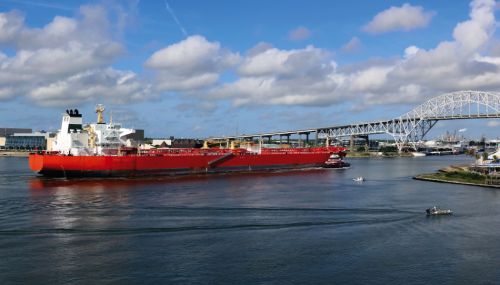All
Fueling a Path Forward With Renewable Fuels
by Jenny Frank, PhD, National Oilheat Research Alliance (NORA) Research Associate

As our summer days get shorter and our shorts become pants, thoughts turn to crisp air, cozy sweaters, football games, and the transition from air conditioning to home heating. But as we start to make the first deliveries of the season, our thoughts might shift to the concerns about our environmental impacts: how can we stay warm without destroying our wallets and planet?
A potential answer to our question comes from renewable energy sources. In the United States, these sources are increasingly gaining traction. In fact, renewable energy sources comprised approximately 13 percent of domestic primary energy consumption in 2022. Biomass, which includes wood, biomass waste, and biofuels, has been a significant contributor.1
Renewable fuels can offer an environmentally friendly solution while providing warmth and comfort during those cold, long winter nights. Biodiesel is a biofuel derived from renewable sources, such as used cooking oils, vegetable oils, animal fats, or yellow grease.2 When considering environmentally friendly heating options, biodiesel can be a powerful tool, a step we can take right in our homes to help reduce our carbon footprint.
You may be wondering how this is possible. Well, petroleum diesel and biodiesel fuels are similar in their chemical composition. Consequently, biodiesel can be blended into heating oil and used in existing heating systems with minimal modifications to systems that use Number 2 Fuel Oil (heating oil). Your customers can stay cozy on a chilly autumn night while reducing their carbon footprint. This is just one of the many benefits that biodiesel has to offer liquid fuel retailers and their clientele.
The proof is in the pudding, or should I say biomass? Extensive published research quantifies the environmental benefits of utilizing biodiesel. One approach is through a life cycle analysis. This methodology evaluates the potential environmental impacts of products or services ranging from the extraction of raw materials to disposal.3 A life cycle analysis conducted by Argonne National Laboratory found that utilizing a 100 percent biodiesel (B100) fuel resulted in significant emission reductions (74 percent) compared to conventional petroleum diesel.4 Another comprehensive life cycle analysis focused on biodiesel and renewable diesel and found that greenhouse gas reductions as high as 86 percent could be achieved compared to petroleum diesel fuel.5
Renewable fuels are making up a much more significant mix of the liquid heating markets in the Northeast; a recent estimation by NORA has concluded that approximately 11 percent of liquid heating fuel, on average, contains biodiesel blended into the heating fuel, and that percentage is increasing year over year. Government programs are helping to fuel the future of renewable fuels, such as the Renewable Fuel Standard program,6 the Higher Blends Infrastructure Incentive Program,7 and the Rural Energy for America Program,8 to name a few.
So, as your customers sip their apple cider, embrace the fall foliage, and unpack those cozy sweaters, and you start scheduling your first seasonal deliveries this fall, let’s consider moving toward a greener future. Let’s unpack the possibility of fueling our path forward with renewable fuels. While the change may seem small, the potential impacts are significant.
Learn more about renewable fuels and how NORA can support sustainable home heating by contacting Dr. Jenny Frank at jfrank@noraweb.org.
References
1. United States Energy Information Administration. U.S. Energy Facts Explained, https://www.eia.gov/energyexplained/us-energy-facts/ (2023, accessed 12 July 2024).
2. Alternative Fuels Data Center (United States Department of Energy). Biodiesel Production and Distribution, https://afdc.energy.gov/fuels/biodiesel-production#:~:text=Biodiesel is produced from vegetable,and glycerin (a coproduct). (accessed 12 July 2024).
3. Cutshaw A, Chou J, Skone TJ, et al. Life Cycle Analysis of Thermoelectric Power Generation in the United States. In: Abraham MABT-E of ST (Second E (ed). Oxford: Elsevier, pp. 478–491.
4. Huo H, Wang M, Bloyd C, et al. Life-Cycle Assessment of Energy Use and Greenhouse Gas Emissions of Soybean-Derived Biodiesel and Renewable Fuels. Environmental Science & Technology 2009; 43: 750–756.
5. Xu H, Ou L, Li Y, et al. Life Cycle Greenhouse Gas Emissions of Biodiesel and Renewable Diesel Production in the United States. Environmental Science & Technology 2022; 56: 7512–7521.
6. United States Environmental Protection Agency. Overview of the Renewable Fuel Standard Program, https://www.epa.gov/renewable-fuel-standard-program/overview-renewable-fuel-standard-program (2024, accessed 12 July 2024).
7. United States Department of Agriculture. What is the Higher Blends Infrastructure Incentive Program?, https://www.rd.usda.gov/HBIIP#:~:text=What is the Higher Blends,derived from U.S. agricultural products. (2023, accessed 12 July 2024).
8. United States Department of Agriculture. Rural Energy for America Program Renewable Energy Systems & Energy Efficiency Improvement Guaranteed Loans & Grants, https://www.rd.usda.gov/programs-services/energy-programs/rural-energy-america-program-renewable-energy-systems-energy-efficiency-improvement-guaranteed-loans (2024, accessed 12 July 2024).
Related Posts
 Care and Treatment of Biodiesel Blends
Care and Treatment of Biodiesel Blends
Posted on December 18, 2025
 EIA Winter Fuels Outlook
EIA Winter Fuels Outlook
Posted on December 18, 2025
 How to Set Your Business Apart with Renewable Propane
How to Set Your Business Apart with Renewable Propane
Posted on October 16, 2025
 EIA Report: Biodiesel and Renewable Diesel Imports Fall Sharply
EIA Report: Biodiesel and Renewable Diesel Imports Fall Sharply
Posted on October 16, 2025
Enter your email to receive important news and article updates.
